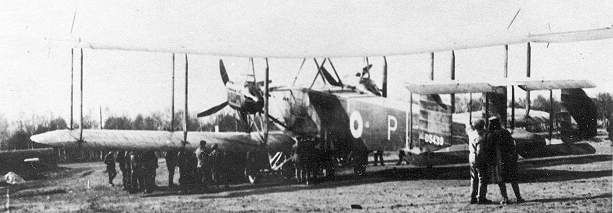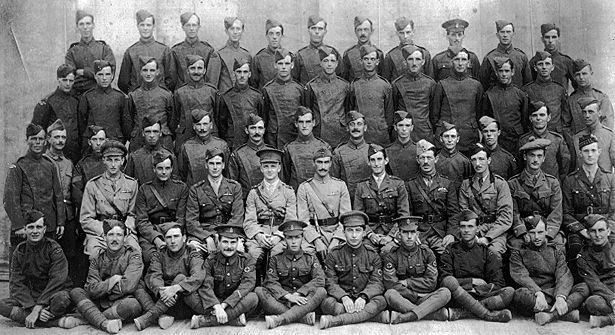 Handley Page O/400 D5439 'P' of 58 Sqn, one of the machines that undertook the post-WW1 RAF exercise in flying out these bombers to the Middle East.
Handley Page O/400 D5439 'P' of 58 Sqn, one of the machines that undertook the post-WW1 RAF exercise in flying out these bombers to the Middle East.
LAWRENCE'S AIR FORCE |
| < back to Hejaz Page ... < previous | 1 | 2 | 3 | 4 | 5 | 6 | 7 | 8 | 9 | 10 | 11 | 12 | 13 | next > |
 Handley Page O/400 D5439 'P' of 58 Sqn, one of the machines that undertook the post-WW1 RAF exercise in flying out these bombers to the Middle East.
Handley Page O/400 D5439 'P' of 58 Sqn, one of the machines that undertook the post-WW1 RAF exercise in flying out these bombers to the Middle East.
|
SUMMING UPThe unit's work and achievements during the nine months it was active in the Hejaz was that it played a notable part in supporting the Arab ground forces, provided new and accurate ground and air reconnaissances, produced up-to-date and detailed maps and in general, helped to keep 'Johnnie Turk' on the go. The BE2c machines had suffered a very hard life and were only kept in good order by dint of the excellent work of the Air Mechanics at all times, under extremely trying conditions. The Crossley tenders proved to be just the right vehicles for the rough terrain, the Rolls cars being really too heavy. The Crossley, when fitted with double wheels on all four axles, could go anywhere! Communication between aircraft and car parties was usually by means of white canvas strips, 15 feet x 2 feet and smoke signals. Just prior to the unit's withdrawal, machine 5421 was fitted with a wireless set. The medical care of the men was undertaken by Major McConnochie and Capt Montgomery RAMC; any seriously ill could be quickly shipped to Port Sudan or Suez. In September 1917, 14 Squadron sent 'X' Flight under the command of Capt Stent to Akaba, to support the continuing fight against the Turks, but that is another story. Below - 'The Arabian Detachment' at almost full strength. The officers have already been identified. (See page 5) |
THE PEACE CONFERENCEAt the end of the Great War, a multi-national Peace Conference was arranged in Paris, to try and sort out the many difficult and complicated settlements that needed to be done. Amongst these problems was the request by the Arabs for full international recognition of their claim for the formation of an Independent Arab State. Lawrence had pledged his word to Emir Hussein that the British Government of the day fully supported their cause, but in this, Hussein and Feisal were to be cruelly misled. Unknown to the Arabs and others, the secret Sykes-Picot Agreement had been drawn-up in 1916, between Britain, France and Russia, to divide up the Middle East to their own advantage. Under this agreement, Britain was to have the Mandate of Palestine, France to have influence over most of Syria and Russia to control Constantinople. In October 1918, at a private investiture by the King, Colonel Lawrence declined to accept his CB (Companion of the Order of the Bath), telling His Majesty that he (Lawrence), could never wear such a decoration while continuing to support and fight for the Arab cause. The Peace Conference opened in January 1919 and Lawrence attended as a member of Feisal's staff, translating Feisal's speech to the Conference on 6 February. The shameful volte-face of Lloyd George and the British Government in subsequently not supporting the Arab cause, meant that this was eventually lost and in the end, Emir Hussein was ousted from the Hejaz by his old rival Ibn Saud of the Nejd, hence Saudi Arabia of today. |
 |